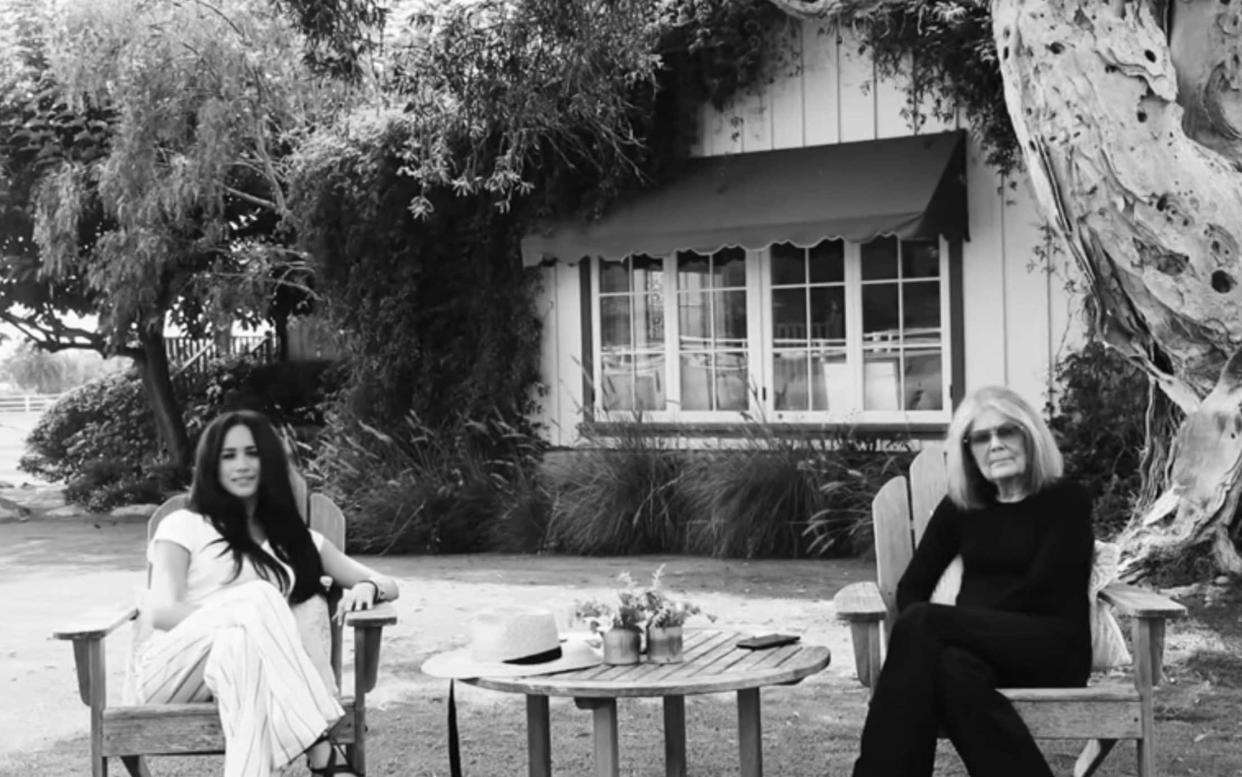Why do Meghan and Gloria both look like they've just stepped out of the 70s?

One of them is a hugely polarising figure, of mixed-race parents, who married a Brit. The other is the Duchess of Sussex. Ever since their release, earlier last week, the artfully monochromatic pictures and video of the 39-year-old Meghan meeting the 86-year-old Gloria Steinem, in the former’s Montecito garden in California, have been pored over and parsed for meaning.
Given the topic of their conversation – the importance of voting – its timing, in the run up to a US presidential election which is unfolding during one of the most divisive periods in the country’s recent history, and the notoriety/fame of both women, this is a photo that’s likely to become a salient image of 2020. (The Duchess also revealed in an earlier video that her own husband cannot vote in his homeland – maybe she’s fighting this one for the Prince.)
Inevitably, much has been made of a) Meghan’s wide- brimmed straw hat, and its cost, (£269), b) the state of the Sussex lawn (patchy, just like real people’s lawns), c) the extensiveness of their grounds and d) the mise-en-scene’s resemblance to a Ralph Lauren advert. This is not the first time a royal has modelled themselves on that designer’s aesthetic – remember the widely mocked picnic pictures of Diana and Charles?
A post shared by MAKERS Women (@makerswomen) on Aug 26, 2020 at 12:16pm PDT
But surely the really pertinent feature is that both women’s clothes have pretty much stepped right out of the early Seventies, when Steinem first became a heroine of US progressiveness, or what today might be called woke values.
Flares, polo necks, wedges… this could be a picture of two of the original editors of Ms., the feminist magazine Steinem founded in 1971, meeting to discuss how they’re going to cover the dreaded Phyllis Schlafly, the anti-abortion, anti-women’s rights campaigner, played by Cate Blanchett in Mrs. America (if you still haven’t, check it out on BBC iPlayer, not just for the history, but also the clothes, which look as though they are straight off a Prada or Michael Kors catwalk).
It’s really quite bizarre. There’s no other time in the past 200 years when a 50-year lapse has made so little visual footprint on clothing. It’s all the more peculiar when you consider that the past five decades have seen a stratospheric rise in fast fashion – and the speeding up of trends to the point where an entire industry is now majorly implicated in the destruction of the planet.
Do we conclude that the reason we keep circling back to Seventies fashion is that the decade’s clothes made women look confident, powerful, sexy and, just as importantly, comfortable in a way that has never really been bettered? If that’s the case, then how did designers hit on such a happy combination at a time when gender equality left so much to be desired? Were those Seventies designers subconsciously projecting 50 years into the future when their customers’ lives would finally live up to their clothes? Or is it simply an illustration that the more trends change, the more they stay the same?
Lisa Armstrong's column appears each Saturday in The Saturday Telegraph and is published online every Saturday at 7am on Telegraph Fashion.
For more news, analysis and advice from The Telegraph's fashion desk, click here to sign up to get our weekly newsletter, straight to your inbox every Friday. Follow our Instagram @Telegraphfashion


